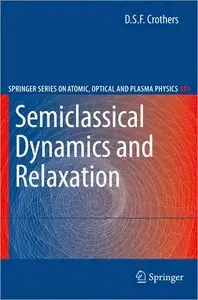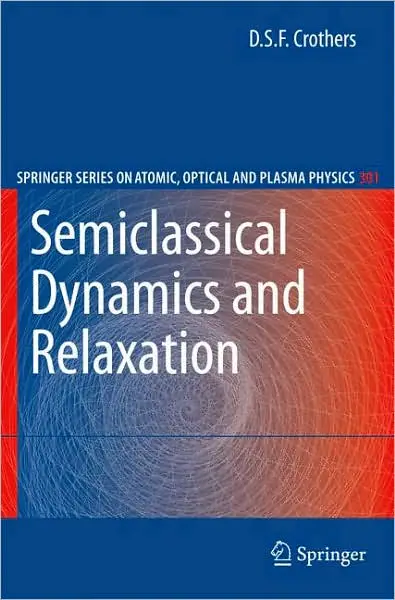Semiclassical Dynamics and Relaxation by Derrick S. F. Crothers
English | 2007-12-04 | ISBN: 038774312X | 347 pages | PDF | 4,3 mb
English | 2007-12-04 | ISBN: 038774312X | 347 pages | PDF | 4,3 mb
Condensed-matter physics plays an ever increasing role in photonics, electronic and atomic collisions research. Dispersion (Dynamics and Relaxation) includes scattering/collisions in the gaseous phase. It also includes thermal agitation, tunneling and relaxation in the liquid and solid phases.
Classical mechanics, classical statistical mechanics, classical relativity and quantum mechanics are all implicated. 'Semiclassical' essentially means that there is a large or asymptotic real parameter. 'Semiclassical' can also mean 'classical with first-order quantal correction', based on an exponentiated Liouville series commencing with a simple pole in the -plane, being Planck's reduced constant and coming with all the attendant connection problems associated with the singularity at the turning or transition point and with the Stokes phenomenon. Equally,' semiclassical' can mean 'electrons described quantally and the heavy particles classically'. This latter gives rise to the so-called impact parameter method based on a pre-assigned classical trajectory. With evermore sophisticated experiments, it has become equally more important to test theory over a wider range of parameters.
For instance, at low impact energies in heavy-particle collisions, the inverse velocity is a large parameter; in single-domain ferromagnetism, thermal agitation (including Brownian motion and continuous-time random walks) is faced with a barrier of height 'sigma', a possibly large parameter. Methods of solution include phase-integral analysis, integral transforms and change-of-dependent variable. We shall consider the Schrödinger time-independent and time-dependent equations, the Dirac equation, the Fokker Planck equation, the Langevin equation and the equations of Einstein's classical general relativity equations. There is an increasing tendency among physicists to decry applied mathematics and theoretical physics in favour of computational blackboxes. One may say applied mathematics concerns hard sums and products (and their inverses) but unless one can simplify and sum infinite series of products of infinite series, can one believe the results of a computer program? The era of the polymath has passed; this book proposal aims to show the relevance to, and impact of theory on, laboratory scientists.



